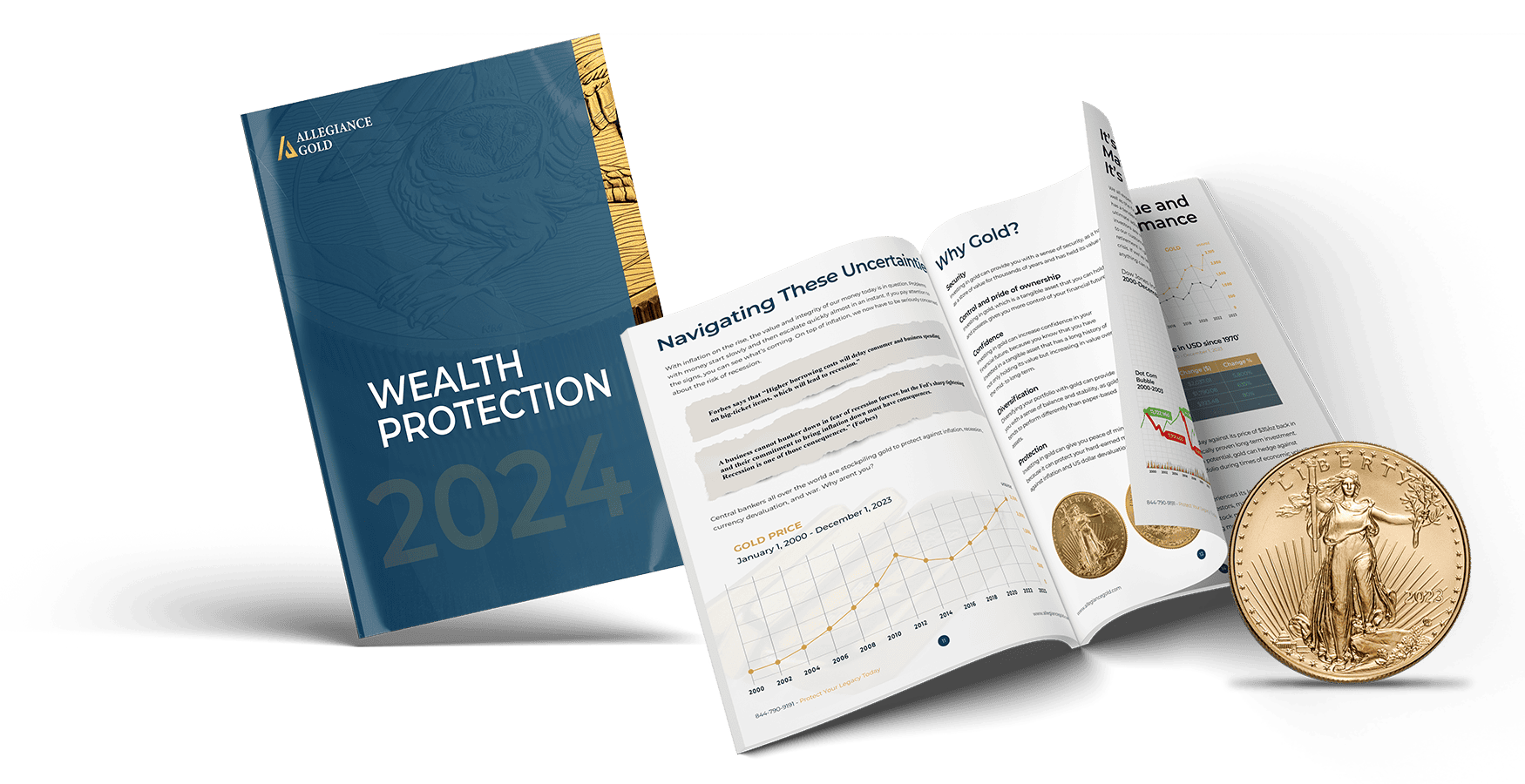“It’s not what you know that puts your savings at risk – it’s what you assume is safe.”
Introduction
For generations, Americans have trusted the banking system to safeguard their hard-earned money. From direct deposits to retirement accounts, banks have long been viewed as stable stewards of wealth. But in today’s rapidly evolving financial landscape, that trust deserves a second look.
In this guide, we’ll explore five critical truths about banking risk that are often misunderstood or entirely overlooked. More importantly, we’ll discuss how to mitigate those risks — including how physical gold and silver can serve as reliable, non-bank alternatives.
This article is provided by Allegiance Gold for educational purposes only. As always, readers should consult a licensed financial advisor before making investment decisions.
1. You Bank Is Not a Vault – It’s a Borrower
Most people believe that when they deposit money into a bank, it remains in a secure vault with their name on it. In reality, a deposit is legally classified as a loan to the bank. You become an unsecured creditor, and the bank becomes the borrower.
Banks use your deposits to fund loans, investments, and other financial products. While this system works well during periods of stability, it becomes fragile in times of financial stress. If a bank fails, your ability to access funds could be delayed or even limited.
In extreme cases, such as during the 2008 financial crisis or more recent bank failures, depositors experienced significant anxiety — even when insured. If you have deposits above the FDIC limit or rely heavily on one institution, you may be exposed to more risk than you realize.
2. FDIC Insurance Has Real Limits
The Federal Deposit Insurance Corporation (FDIC) covers up to $250,000 per depositor, per insured bank, per account ownership category. While this provides a safety net, it has important limitations:
✅ The FDIC insures approximately $10 trillion in U.S. deposits, but only has a fund of around $120 billion.
✅ In a systemic banking crisis involving multiple major banks, the FDIC’s resources could be rapidly depleted.
✅ Business accounts, joint accounts, and retirement accounts may not all be covered the way individuals expect.
This coverage is not a blank check. If you have large balances or are nearing retirement, it may be time to consider diversifying beyond the traditional banking system.
3. Moody’s Downgraded 10 Banks – For a Reason
In 2025, Moody’s Investors Service downgraded 10 U.S. regional and national banks, citing concerns over rising interest rates, reduced consumer confidence, and the federal government’s decreasing capacity to support failing institutions.
Among the banks affected were major names like Bank of America, Wells Fargo, and JPMorgan Chase. While these institutions remain operational, the downgrade signals a critical shift in how financial risk is perceived by institutional analysts.
The takeaway? Even “too big to fail” banks are not immune to economic pressure, and depositors should stay informed and proactive.
4. How Gold and Silver Can Hedge Your Exposure
Gold and silver have been trusted for centuries as stores of value. Unlike paper currency or digital bank records, precious metals are tangible assets that do not depend on third-party performance.
Why Physical Metals?
✅ Independent of the banking system.
✅ Immune to digital manipulation or freezes.
✅ Historically reliable during times of inflation, crisis, and war.
When properly stored in secure, IRS-approved depositories, precious metals can provide a layer of financial security that diversifies your portfolio beyond bank-issued assets.
Physical metals offer peace of mind in an uncertain world. They are not subject to bank failures, credit risk, or government spending decisions.
5. How to Move IRA/401(k) Assets into Physical Metals – Legally
One of the most effective ways to diversify your retirement savings is through a self-directed IRA backed by physical gold or silver. This process is entirely legal and can be executed without penalties or tax consequences when done properly.
Here’s a simplified overview:
1. Open a self-directed IRA through a custodian who allows precious metals.
2. Fund the account via rollover or transfer from an existing IRA or 401(k).
3. Select your metals – gold and silver coins or bars that meet IRS requirements.
4. Choose a depository for secure, insured storage.
5. Track performance just as you would with other investments, with full legal ownership of the metals held in your name.
This type of account allows you to hold real, physical assets in a tax-advantaged structure, giving you more control over your financial future.
Final Thoughts
In today’s unpredictable financial climate, blindly trusting the banking system is a luxury few can afford. From legal classifications to limited insurance, there are real risks that every American saver and retiree should understand.
Fortunately, there are proven ways to diversify your exposure, protect your savings, and preserve your peace of mind. Physical gold and silver have stood the test of time — and may deserve a place in your portfolio.
Disclaimer: This content is provided by Allegiance Gold for educational purposes only and should not be construed as financial, tax, or legal advice. Allegiance Gold is not a registered investment advisor, broker-dealer, or tax advisor. Please consult with a qualified professional before making any financial decisions.
To Start Your Gold IRA Today:
Download Your Free Gold IRA Guide | Open Your Gold IRA Account | Book Your Consultation
Protect your financial future with Allegiance Gold an Inc 5000 company– Your trusted partner in Gold and Silver IRA investments.
 |
 |
Buy Now |
Buy Now |
Act now and join the millions who trust gold to secure their wealth.



 Custom Precious Metals IRA
Custom Precious Metals IRA Gold IRA
Gold IRA Gold Products
Gold Products Silver Products
Silver Products Platinum
Platinum